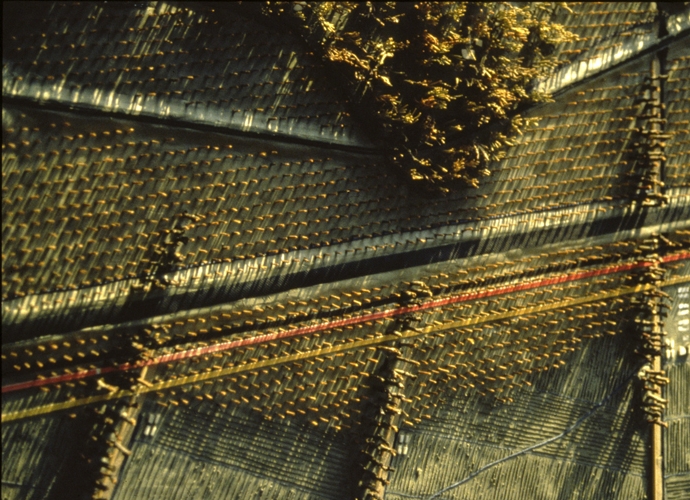PARCO OSTIENSE
PARCO OSTIENSE
Tom Leader Studio
Rome, Italy
Silt carried by the Tiber has formed much of the buildable, arable land between Rome and the sea. This process will continue indefinitely. At present, flood safety engineers have erected dikes along the river and cleaned the channel of tree growth so that water moves as quickly as possible to the ocean. Parco Ostiense, extending from Rome to the sea, represents an attempt to manipulate flooding and the steady deposit of silt for productive purposes. The park is formed by two actions. First, the flood control dike is replaced by a wider zone of earth mounds which allow large areas of the valley to flood but prevent destructive scouring. This is followed by the construction of large weirs across the floodplain in the zone between Magliana and Fiumicino. Weirs serve to impede the flow of floodwater and allow silt to settle out, improving soil fertility.
The weirs subdivide the vast floodplain into a series of terraced fields for produce farming. A huge swath of orchards and vineyards parallel the current autostrada and rail line to the airport. Proposed motorino and running trails to the beach run through the orchards as well as a frontage road for farm trucks. Hook ups for mobile homes allow changeable co-operative housing for farmers. Gravel roads along the silt weirs and irrigation canals direct park users to a river’s edge walk where re-introduced willow and poplar groves give shade and shelter. At Fiumicino, transportation and shipping flows enter the picture. In the past, siltation and the advancing coastline disabled the ports at Ostia Antica as well as Trajan’s Harbor. In this case, a wall (the conclusion of the series of weirs) extends 10 kilometers into the ocean to anchor silt driven north by ocean currents. The growing landmass will support a greatly expanded airport, returning the area occupied by the current facility to cultivation. The protected water directly north of the sea wall remains deep enough for the development of a container port in close proximity to the city versus the current facility at Civitavecchia. Ferries and cruise ships would also be accommodated. A high-speed rail line connects these facilities to other European hubs. A heroic new air/rail terminal marks the point of connection between these different systems moving north-south and east-west. The city of Fiumicino, like Ostia Antica, is no longer a seaside community but now profits from its strategic location and expansion onto an archipelago of delta islands.

